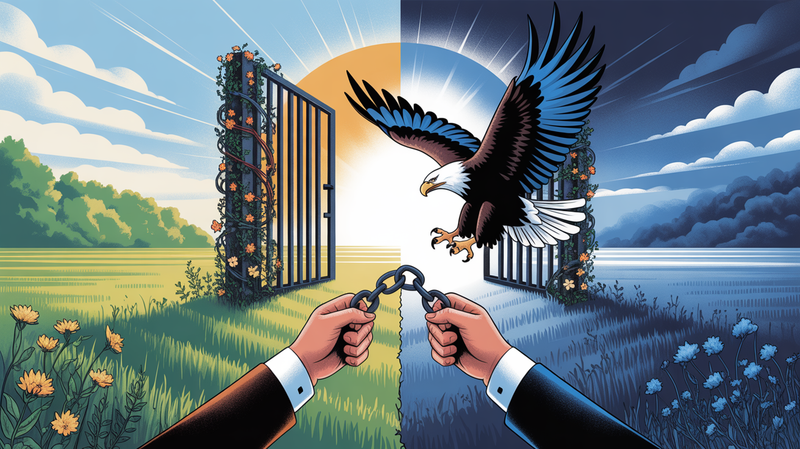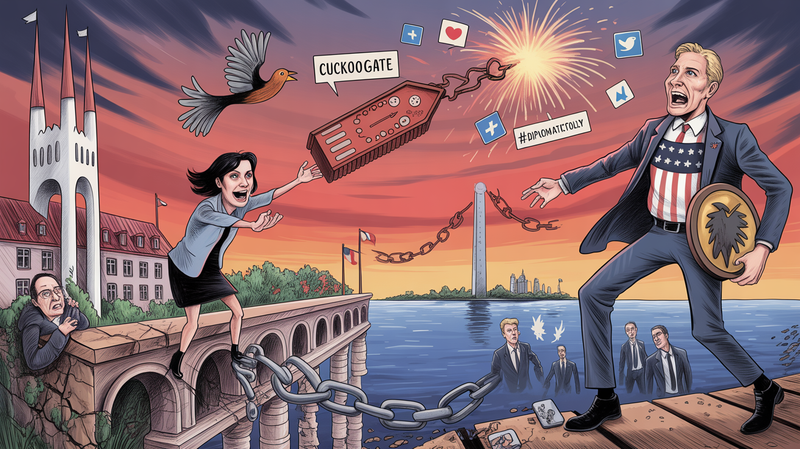The "Aufbau Ost" Phenomenon and Estonia's Vision for a New World Order
Ukraine's post-war reconstruction is dominating discussions at the ongoing Opinion Festival 2023 in Paide, Estonia. The festival's program features topics like "Ukraine's Victory and Its Global Consequences", and if one thing is clear, it's that Ukraine's victory is

Ukraine's post-war reconstruction is dominating discussions at the ongoing Opinion Festival 2023 in Paide, Estonia. The festival's program features topics like "Ukraine's Victory and Its Global Consequences", and if one thing is clear, it's that Ukraine's victory is not in doubt. With esteemed organizers and support from both Estonian and Nordic ministries, the event is an authoritative platform, making it evident that these aren't just idle discussions.
Estonia seems to be looking beyond Ukraine's reconstruction. Ukraine's win implies - and even necessitates - the collapse of Russia. This means the rebuilding process would envelop not just Ukraine but the entirety of what's currently Russian territory. In a discussion titled "Russian Aggression and International Responsibility", there is even talk of a "new world order".
The sheer scale of this reconstruction will be monumental, spanning geographically, politically, and financially. Given this backdrop, Estonia's economic powerhouses and its political leaders are keen to grab a significant slice of this rebuilding pie. This vision of external expansion is now a primary vector for Estonia's foreign and economic policies for the foreseeable future.
In simpler terms, military power is just the means to the end. What we hear as the echo of artillery might soon be replaced by the sounds of construction machinery.
But what does all this mean for Nursipalu? Once home to residents, forests, and traditional life, Nursipalu has transformed. Broad roads, infrastructure, and buildings have taken over. Yet, with the impending Ukrainian victory and the consequent decline in military need, what happens to this space?
While there's an inclination to believe that returning Nursipalu to its former state is possible, the prevalent mindset in Estonia, as architect Helmi Maria Langsepp articulates, is that once an area has been developed, it's permanent.
This rapid expansion eastwards recalls the term "Aufbau Ost". While it literally translates from German as the "reconstruction of the East", it has historical significance relating to East Germany post the fall of the Berlin Wall in 1989 and even dates back to a World War II strategy. Today, we are witnessing yet another manifestation of the "Aufbau Ost" concept.
History has shown that not every plan unfolds as expected. As physicist Ago Samoson might point out, even the simplest processes can't always be predicted. Not every Aufbau Ost initiative went as planned in the past. Given Estonia's track record of irreversible development, the country might benefit from keeping options open, especially for places like Nursipalu.
As we dwell on these developments and strategies, one can't help but reflect on Lenin's vision of a new world order. His predictions did not come to fruition. But as history tells us, and as Samoson might suggest from a physicist's viewpoint, outcomes can be unpredictable. Perhaps the Opinion Festival's discussions will shed more light on the path Estonia might choose.
Addendum: Understanding 'Aufbau Ost'
The term "Aufbau Ost" may be unfamiliar to many English-speaking readers, but it holds significant historical and cultural weight in German contexts. Directly translated, it means "building up the East." However, the implications and nuances of this term span across various periods in German history.
- Post-World War II Era: After the fall of the Berlin Wall in 1989 and the subsequent reunification of Germany, "Aufbau Ost" referred to the major efforts to economically and infrastructurally rebuild and integrate East Germany (GDR) with its western counterpart. This was a massive undertaking, involving vast investments to bridge the socio-economic disparities between the two regions.
- Pre-World War II Context: As referenced in some historical documents, "Aufbau Ost" was also the name for a plan in 1940 related to the German military's movements towards its eastern frontiers.
To grasp the full essence of "Aufbau Ost," one should see it not just as a term, but as a representation of Germany's commitment to revitalize and reintegrate its eastern regions at different points in history. It encapsulates a series of national and, sometimes, international efforts centered on promoting economic growth, education, and social stability in Eastern Europe or post-Soviet spaces.




